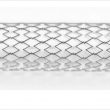In patients with 3-vessel disease, surgery obtained better outcomes than angioplasty, according to results from the SYNTAX and FREEDOM trials, which used first-generation drug-eluting stents. Even in the BEST trial, which used new-generation stents, surgery still offered far better outcomes. Nobody is surprised by the fact that, whenever angioplasty evolves due to a new device...
FOURIER: Efficacy of Evolocumab for Ultra-Low LDL Levels
It seems that a LDL level of 70 mg/dL is no longer low enough for high-risk secondary patients; in consequence, this study attempted to set a new target, one that appears almost impossible to reach: 40 mg/dL or lower. This study, simultaneously presented at the European Society of Cardiology Congress 2017 and published in The Lancet, showed...
Routine FFR in Patients with Acute Coronary Syndrome?
Fractional flow reserve (FFR) has proven to be superior to angiography as a guide to revascularization due to a significant reduction in the number of both long-term and short-term events. Furthermore, deferring treatment of lesions without evidence of ischemia offers an excellent prognosis. Many studies including mostly stable patients showed a significant degree (as high...
Polymer-Free DES Also Show Efficacy in Anticoagulated Patients with High Risk for Bleeding
Patients who receive chronic anticoagulation therapy and then undergo angioplasty are frequently discharged on a triple anti-thrombotic scheme that usually includes aspirin, clopidogrel, and warfarin. The optimal duration of this indication remains unclear, particularly for patients at high bleeding risk. According to expert consensus, patients receiving chronic anticoagulation may receive from 1 to 12 months of dual...
Self-Expanding Stents Are Superior to Balloon-Expandable Stents in the Iliac Arteries
Courtesy of Dr. Carlos Fava. Severe atherosclerotic disease in iliac arteries is experienced by 15% of all men and 5% of all women. TAC II recommends angioplasty for type-A, -B, and -C lesions. As regards stent type, self-expanding stent (SE, more elasticity) vs. balloon-expandable stent (SB, more radial strength), Reekers indicates superior target lesion revascularization (TLR) with SE. However, there...
Striking Finding on Diabetes and Bypass Graft Patency
The higher rate of restenosis in the diabetic population is historic and has been reproduced in all studies and with all kinds of stents, but it was only after the FREEDOM trial when we found out about the higher infarction rate with PCI compared to surgery. This is why 50% of patients undergoing CABG are diabetic. Apart from the above...
Should We Begin to Use IVUS in CTO?
Courtesy of Dr. Carlos Fava. Currently, chronic total occlusions (CTO) are one of the obstacles that coronary angioplasties must overcome, particularly with the development of drug-eluting stents (DES) and new devices and strategies for these challenging lesions. However, there is little information on the safety, efficacy, and real clinical benefit of implanting stents of over 60 mm (known as full metal jackets, FMJ)....
Post TAVR Dialysis: a Severe Complication Less and Less Frequent
The prevalence of pre-procedural kidney failure in patients undergoing transcatheter aortic valve replacement (TAVR) can be as high as 50 – 60% (stage 3 kidney failure or worse); it has been strongly associated with acute kidney deterioration and, ultimately, an increase of post TAVR mortality. A recent meta-analyzis of several small studies carried out in a single...
Bleeding and Mortality in Transcatheter Aortic Valve Replacement
Transcatheter aortic valve replacement (TAVR) is much less invasive than surgical replacement. This is associated with a substantial reduction in bleeding events (up to 60% less). However, clinically relevant bleeding is still present in one every four patients who undergo TAVR, which is associated with morbidity and mortality. Cases of bleeding are not uniform: they may...
Common Femoral PCI Becomes a Valid Alternative
Gentileza del Dr. Carlos Fava. The common femoral artery has always been treated with surgery. Thanks to the development of new generation stents and the advancement of percutaneous intervention, common femoral lesions are currently being treated with PCI. However, data on the safety of PCI vs. surgery, remain unavailable. The TECCO is multicenter study, randomized...









